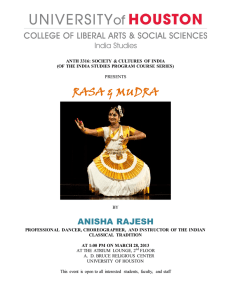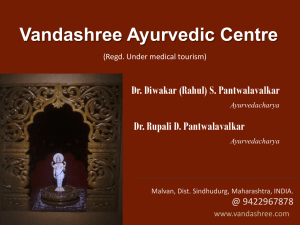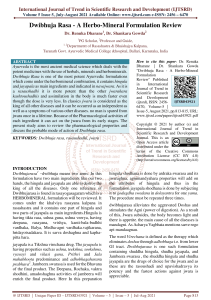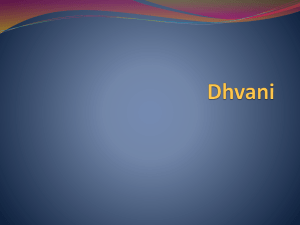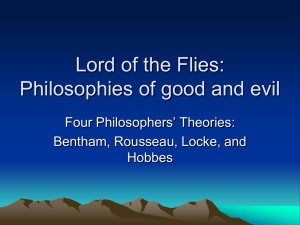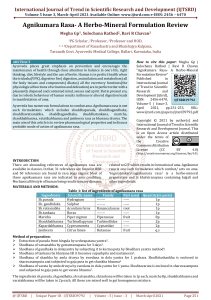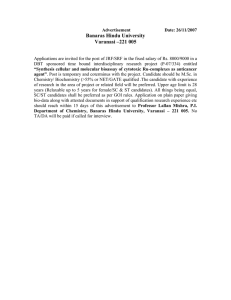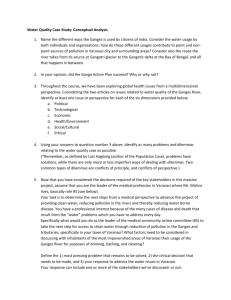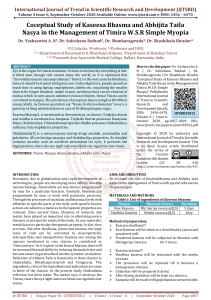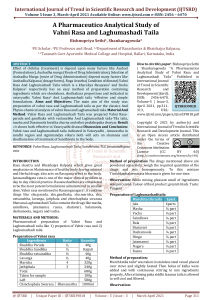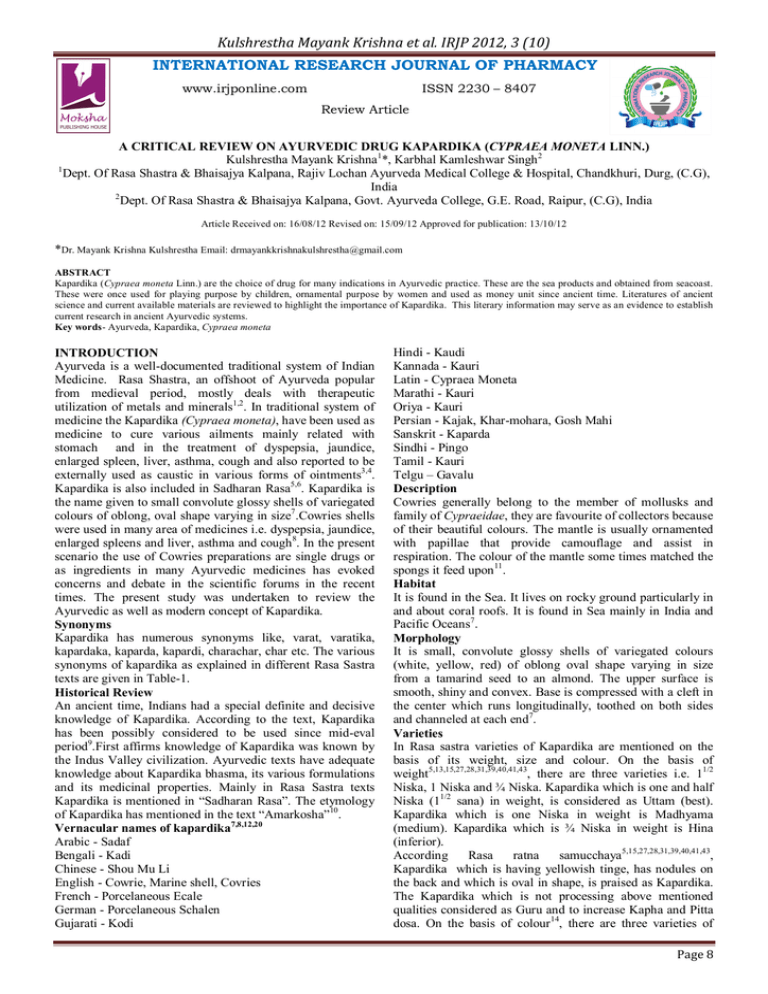
Kulshrestha Mayank Krishna et al. IRJP 2012, 3 (10)
INTERNATIONAL RESEARCH JOURNAL OF PHARMACY
www.irjponline.com
ISSN 2230 – 8407
Review Article
A CRITICAL REVIEW ON AYURVEDIC DRUG KAPARDIKA (CYPRAEA MONETA LINN.)
Kulshrestha Mayank Krishna1*, Karbhal Kamleshwar Singh2
1
Dept. Of Rasa Shastra & Bhaisajya Kalpana, Rajiv Lochan Ayurveda Medical College & Hospital, Chandkhuri, Durg, (C.G),
India
2
Dept. Of Rasa Shastra & Bhaisajya Kalpana, Govt. Ayurveda College, G.E. Road, Raipur, (C.G), India
Article Received on: 16/08/12 Revised on: 15/09/12 Approved for publication: 13/10/12
*Dr. Mayank Krishna Kulshrestha Email: drmayankkrishnakulshrestha@gmail.com
ABSTRACT
Kapardika (Cypraea moneta Linn.) are the choice of drug for many indications in Ayurvedic practice. These are the sea products and obtained from seacoast.
These were once used for playing purpose by children, ornamental purpose by women and used as money unit since ancient time. Literatures of ancient
science and current available materials are reviewed to highlight the importance of Kapardika. This literary information may serve as an evidence to establish
current research in ancient Ayurvedic systems.
Key words- Ayurveda, Kapardika, Cypraea moneta
INTRODUCTION
Ayurveda is a well-documented traditional system of Indian
Medicine. Rasa Shastra, an offshoot of Ayurveda popular
from medieval period, mostly deals with therapeutic
utilization of metals and minerals1,2. In traditional system of
medicine the Kapardika (Cypraea moneta), have been used as
medicine to cure various ailments mainly related with
stomach and in the treatment of dyspepsia, jaundice,
enlarged spleen, liver, asthma, cough and also reported to be
externally used as caustic in various forms of ointments3,4.
Kapardika is also included in Sadharan Rasa5,6. Kapardika is
the name given to small convolute glossy shells of variegated
colours of oblong, oval shape varying in size7.Cowries shells
were used in many area of medicines i.e. dyspepsia, jaundice,
enlarged spleens and liver, asthma and cough8. In the present
scenario the use of Cowries preparations are single drugs or
as ingredients in many Ayurvedic medicines has evoked
concerns and debate in the scientific forums in the recent
times. The present study was undertaken to review the
Ayurvedic as well as modern concept of Kapardika.
Synonyms
Kapardika has numerous synonyms like, varat, varatika,
kapardaka, kaparda, kapardi, charachar, char etc. The various
synonyms of kapardika as explained in different Rasa Sastra
texts are given in Table-1.
Historical Review
An ancient time, Indians had a special definite and decisive
knowledge of Kapardika. According to the text, Kapardika
has been possibly considered to be used since mid-eval
period9.First affirms knowledge of Kapardika was known by
the Indus Valley civilization. Ayurvedic texts have adequate
knowledge about Kapardika bhasma, its various formulations
and its medicinal properties. Mainly in Rasa Sastra texts
Kapardika is mentioned in “Sadharan Rasa”. The etymology
of Kapardika has mentioned in the text “Amarkosha”10.
Vernacular names of kapardika7,8,12,20
Arabic - Sadaf
Bengali - Kadi
Chinese - Shou Mu Li
English - Cowrie, Marine shell, Covries
French - Porcelaneous Ecale
German - Porcelaneous Schalen
Gujarati - Kodi
Hindi - Kaudi
Kannada - Kauri
Latin - Cypraea Moneta
Marathi - Kauri
Oriya - Kauri
Persian - Kajak, Khar-mohara, Gosh Mahi
Sanskrit - Kaparda
Sindhi - Pingo
Tamil - Kauri
Telgu – Gavalu
Description
Cowries generally belong to the member of mollusks and
family of Cypraeidae, they are favourite of collectors because
of their beautiful colours. The mantle is usually ornamented
with papillae that provide camouflage and assist in
respiration. The colour of the mantle some times matched the
spongs it feed upon11.
Habitat
It is found in the Sea. It lives on rocky ground particularly in
and about coral roofs. It is found in Sea mainly in India and
Pacific Oceans7.
Morphology
It is small, convolute glossy shells of variegated colours
(white, yellow, red) of oblong oval shape varying in size
from a tamarind seed to an almond. The upper surface is
smooth, shiny and convex. Base is compressed with a cleft in
the center which runs longitudinally, toothed on both sides
and channeled at each end7.
Varieties
In Rasa sastra varieties of Kapardika are mentioned on the
basis of its weight, size and colour. On the basis of
weight5,13,15,27,28,31,39,40,41,43, there are three varieties i.e. 11/2
Niska, 1 Niska and ¾ Niska. Kapardika which is one and half
Niska (11/2 sana) in weight, is considered as Uttam (best).
Kapardika which is one Niska in weight is Madhyama
(medium). Kapardika which is ¾ Niska in weight is Hina
(inferior).
According
Rasa
ratna
samucchaya5,15,27,28,31,39,40,41,43,
Kapardika which is having yellowish tinge, has nodules on
the back and which is oval in shape, is praised as Kapardika.
The Kapardika which is not processing above mentioned
qualities considered as Guru and to increase Kapha and Pitta
dosa. On the basis of colour14, there are three varieties of
Page 8
Kulshrestha Mayank Krishna et al. IRJP 2012, 3 (10)
Kapardika are mentioned on the basis of colour i.e. Pitta
(yellow), Sweta (white) and Dhusra (grey). Out of these Pitta
(yellow) colour Kapardika is considered as best. Sweta
(white) colour as medium and Dhusara (grey) colour as
undesired. According to Ayurveda Prakash15,43, three types of
Kapardika are Sweta (white), Rakta (Red) and Pitta (Yellow).
Based on structure two types Kapardika are described i.e.
Granthi Yukta (with knot) and Granthi Vihina (without
Knot)16.
Physical Properties
Yellowish in colour, having nods on back surface, heavy in
weight and long Vrinta (Peripheri) should not have any Vrana
(cut or fissure) on their surface6.
Modern View
The money cowrie shell or Cypraea moneta belongs to the
cowrie family. It occurs in areas with warm water
temperatures such as the Maldive Islands. These shells have
medium size teeth, not extending across the base. They are
heavily margined, with base and margin white and unspotted.
In some modern examples a black transverse line crosses the
dorsum almost centrally17. The cowrie shell is one of the
most remarkable primitive currencies ever used before the
advent of gold and silver coinage. This shell extended its
range further than any form of money before or since,
spreading from China and India to the Pacific Islands,
travelling across and encircling Africa and then penetrating
the New World18. Cypraea moneta Linnaeus,1758, is an
abundant and easily recognized gastropod throughout the
Indo-West-Pacific. A number of names distinguishing
subspecies and races have been introduced for the money
cowry, and it is generally recognized as a highly variable
species19. Different colours of cowries are dependent on the21
» Sexual hormones
» Genetic factor
» Pigmentationss
» Disease
» Injury
» Diet
» Presence or absence of aluminium and other compounds
» The acidity of the soil and water22
» Temperature of water
Primarily genetic abnormalities, injury,disease, and
environmental factors.Genetic factors can for instance lead to
albinism, while certain diseases produce unusually large and
heavy shells with a calloused, mottled appearance.
Shodhana (Purification)
It is the process which removes the impurities to some extent
and helps in increasing the therapeutic values of the drugs.
The various media and procedures as explained in different
Rasa Shastra texts are given in Table 2.
Marana (Incineration)
Marana (Incineration) is a process of Rasa Shastra to make
Bhasmas out of metals and minerals for internal
administration. This process is also known as Bhasmi karana.
It is not advisable to use metals and minerals in their natural
forms as a medicament. Very few of them can be used as
such after Shodhana. Majority of them are subjected to the
process of Marana. The various media and procedures as
explained in different Rasa Shastra texts are given in Table 3.
Pharmacological & Therapeutic Properties
Rasa6 - Katu
Guna6- Ruksha, Tiksna
Vipaka6 - Katu
Verya6 - Ushna
Karma6 - Depana, Vrushya, netrya, Rasayana, Sukrakara,
Rasendrajarana, Dosahari, Vida nirmanakari.
Dosa Prabhava6 - Kaphavataghna,
Vyadhi Prabhava6 - Parinam asula, Grahani, Kshaya roga,
Sula, Netra roga, Sukra susti, Sphota, Karna srava,
Agnimandya, Pitta roga, Rakta roga, Kapharoga.
Dose20,43 - 2 Ratti (250 mg).
Anupana20,43 - Vasa swarasa, Nimbu swarasa, Trikatu
kashaya, Udumbara swarasa.
Chemical Constituents
The ash form of Cyprea moneta known as cowrie bhasma
contains phosphate, fluoride and Carbonate of Calcium,
mangnesium and phosphate and manganese8. The analysis of
the Kapardika bhsama shows that the overall process of the
formation of kapardika bhasma involves decarbonation of
calcium carbonate in aragonite form and reformation of the
calcium carbonate in the calcite form. This transformation
occurs via formation of calcium hydroxide and calcium oxide
as the intermediates. Kapardika bhasma is thus highly
crystalline calcium carbonate in the calcite form with
presence of trace elements like Mg, Al, K, Fe and Zn13.
Pharmacological Activity
Cowries shells were used in many area of medicine,
examples include deadly venoms of some cowries shells used
to help victims of strokes and heart diseases and to produce a
revolutionary new drug for chronic pain control. The cement
of the carrier shell is used as a possible cement for bone
fractures. Powdered Pearl’s from shell are used as a topical
eye medicine and it has been scientifically proved to have
some anti-inflammatory effect in painful condition called
conjunctivitis and is also used as calcium supplement both
for human and animal and is an inhibitor of cancer in mice22 .
Report shows that 10% of all cowries had been investigated
in detail for bioactive agent24,25.
Toxicity Study
Animals (mice) treated with Kapardika bhasma did not show
any sign of toxicity in the acute toxicity study. No abnormal
behavior and mortality was observed during 72 hrs after drug
treatment in any experimental group. The haematological,
biochemical parameters and biopsy were also taken into
consideration for assessing the toxicity of above-mentioned
drug26.
Uses And Indications
It is used in indigestion, colic, peptic ulcer, eye diseases,
dysentery, earache, ulcer7, dyspepsia, jaundice, enlarged
spleen & liver, asthma and cough8. Calx is prepared from the
shells of Cyprea moneta and used as expectorant in chronic
bronchitis. A yellow variety is considered good. It is diuretic,
anti-diarrhoeic and of value in eye diseases, if used in the
form of “Surama”, local application with Saltpetre is good for
leucoderma and skin diseases. Ash is mixed with butter and
used for leucoderma and skin diseases and also ash is mixed
with butter and used for curing blemishes and clearing
complexion. Instillation of ash with lemon juice alleviates
ear-ache7.
Ayurvedic Formulation On Kapardika
Agnikumar Rasa
Pradarantaka Lauha
Lokanath Rasa
Hiranya Garbha Pottali Rasa
Page 9
Kulshrestha Mayank Krishna et al. IRJP 2012, 3 (10)
S.No.
1.
2.
3.
4.
5.
6.
7.
8.
9.
10.
11.
12.
13.
14.
No.
1
2
3
4
5
6
7
8
9
10
No.
1.
2
3
4
Sanskrit name
Varat
Varatika
Kapardak
Kaparda
Kapardi
Kapardik
Kapardika
Varti
Varatika
Varya
Bal kridnak
Charya
Char
Charachar
Table 1: Synonyms of Kapardika
Rasendra Chudamani27 Anand kanda13 Ayurved Prakash15
+
+
+
+
+
+
+
+
+
+
+
+
+
+
+
-
Media
Kanji
Kulattha Kwath
Amla Drava
Nimbu Swarasa/
Jambir Nimbu Swarasa
Kusmand Swrasa
Gomutra
Takra
Churnodak (Lime water)
Nimbu Swarasa
Adrak Swarasa
Media
Tivra-agni
Dhamana
Puta-paka
Puta-paka
Angar dhamana
& Puta-paka
Rasa Tarangini14
+
+
+
+
+
+
+
+
+
+
+
+
Table 2: Sodhana of Kapardika
Procedure
References
Swedana in Dola Yantra for 3 hours 5,15,27,28,29,30,31,37,39,40,41,42,43
Swedana in Dola Yantra for 3 hours
14
Swedana in Dola Yantra for 3 hours
14,41
Swedana in Dola Yantra for 3 hours
5,14,33,37,39,40,41
Swedana in Dola Yantra for 3 hours
Swedana in Dola Yantra for 3 hours
Nirvap(Soaking) for 7 days
Nirvap(Soaking) for 7 days
Nirvap (Soaking) for 7 days
Tituration for 3 times
42
42
34
34
34
5,39,40,41
Table 3: Marana of Kapardika
Procedure
Dhamana in angar
Gaja puta with Cow dung cake
Puta with Paddy husk & Cow dung cake
Dhamana in angar, bhavana with Nimbu or Kumari swarasa,
Gaj puta with cow dung cake
CONCLUSION
Varatika (Cypraea moneta Linn.) were used in many area of
medicine. It plays important role in Ayurvedic medical
practice. The usage mentioned in Ayurvedic literatures has to
be reviewed. it has been scientifically proved to reassure the
facts claimed in the literatures. It is also used as calcium
supplement both for human and animal.
REFERENCES
1. Gupta KL, Chinta S, Reddy KR. Importance of Ananda kanda in the
history of Indian alchemy. Bull. Ind. Inst. Hist. Med., Hyderabad 2006;
36 : 159-66.
2. Madhavacharya. Sarva Darshana Samgraha,(Raseshwara Darshana)
verse 9/18 In: Umashankar Sharma Rishi, editor. Choukhamba Vidya
Bhavan ,Varanasi: 1964. p. 383.
3. Gopal R, Vijayakumaran M, Venkatesan R, Kathiroli S. Marine
organisms in Indian medicine and their future prospects. Nat Prod Radi
2008; 7(2): 139-145.
4. Vedhagiri SJ, Ganesan K, Jobe Prabakar PC. Spectroscopic
Investigations of Palakari (Cowrie Shell) Parpam. J Res Educ Indian
Med 2012; 8(1): 27- 32.
5. Dattatreya Anant dev Kurkarni. Rasa Ratna Sammuchaya. Mehar Chand
Laxman Das publication Newdelhi 1998: 64,66-67
6. Joshi damodar. Rasa Sastra. Chaukhamba Orientalia, Varanasi. 2006:
240.
7. Anonymus. Inventory of Animal Products used in Ayurveda, Siddha &
Unani. CCRAS, Dept. of AYUSH, Govt. of India, New Delhi, p. 422426.
8. Nandakarni KM, Nandkarni AK. Indian Matera Medica. Popular
Prakashan Pvt. Ltd. Bombay. Vol I, 1976, 135-231.
9. Sharma PV. Ayurveda Ka Itihas. Chaukhambha Orientalia, Varanasi.
2003. 390,478.
10. Shastri Hargovinda. Amarkosha. Chaukhambha Sanskrit Santhan,
Varanasi, 2004,18.
11. Harasewych, M.G., 1991. Shells: Jewels from the Sea. Courage Books,
U.S.A., pp: 224.
References
14,15,28,37,39,40,43
14,40
27,40
34,37,38,41
12. Dole V, Paranjpe P. A Text book of Rasashastra. Chaukhamba Sanskrit
Pratishthan, Delhi. 2006, 256.
13. Mishra Siddhinandan. Anand Kand. Chaukhambha Orientalia, Varanasi,
2008, 641,682
14. Sastri Kashinanth. Rasa Tarangani. Motilal Banarsi Das, New
Delhi,2004, 299-302.
15. Mishra GS. Ayurved Prakash. Chaukhambha Bharti Academy, Varanasi,
2007, 252,330-331
16. Swami Bhajandas. Rasa Darpana. Nath Pustak Bhandar, Rohatak,
Haryana, Part I, 236-238
17. R. Kilburn and E. Rippey, Sea shells of Southern Africa. Johannesburg,
1982, p. 67.
18. S. Tiley and E. Burger, Cowries in the Archaeological and Maritime
Record. Strandloper, April 2002, 5-7.
19. Schilder F. A. 1936. Revision of the genus Monetaria (Cypraeidae).
Proc, Zool. Soc. London 106 (2): 1113-1135.
20. Reddy KRC, Ocean of Ayurvedic Pharmaceutics, Chaukhambha
Sanskrit , Varanasi, 2007, 243-245.
21. Bandaranayake Wickramasinghe M., The nature and role of pigments of
marine invertebrates. Nat Prod Rep 2006, 23, 223.
22. Helman, Z., 2002. Observation on the Biology and Nutritive value of the
African shell Cypracidae. E. Afri. Wild life J., 16: 86-95.
23. Bhagwat m, kashalkar RV, Bhave AS, vaidya SS, Ramaswamy V.
traditional preparation of Kapardika Bhasma and physic chemical
characterization of the bhasma and its intermediates. Indian drugs 41 (4)
April 2004, 207-213.
24. Hayward, P., T. Nelson-Smith and C. Shields, 1996. Collins pocket
guide. Seashore of Britain and Northern Europe. London: Harper
Collins.
25. Fish, J.D. and S. Fish, 1996. A student’s guide to the seashore. Second
edition. Cambridge University and Press.
26. Anita Singh et al. Acute And Subchronic Toxicity Study Of Calcium
Based Ayurvedic ‘Bhasmas’ And A ‘Pishti’prepared From Marine
Animals Journal of Herbal Medicine and Toxicology by 4 (1) (2010),
35-47
27. Tripathi I.-Rasendra Sar Sangrah, Chaukhambha Orientalia, Varanasi,
2006,58-59.
28. Anonymous, Rasa Chandanshu -C.C.R.A. S. New Delhi,2011, 48,52-53.
Page 10
Kulshrestha Mayank Krishna et al. IRJP 2012, 3 (10)
29. Mishra S. Rasendra Chudamani, Chaukhambha Orientalia, Varanasi,
2004, 193-194.
30. Mishra S. Rasa Prakash Sudhakar, Chaukhambha Orientalia, Varanasi,
2004, 127-128.
31. Mishra S. Rasa Manjari, Chaukhambha Orientalia, Varanasi, 2003,
23,42-43.
32. Dwivedi V. Rasendra Sambhava. Krishna Das Academy, Varanasi,1997,
202-203
33. Shastri K J. Rasa Ratnakar,Rasa Shala Aushadha Sharam, Kathiawar,
1940, 8,19.
34. Anonymous, Rasa-Tantrasar Siddha Prayoga Sangrah, Krishna Gopal
Ayurveda Bhawan Kaleda (Ajmer), Part I, 1996, 74,199-201.
35. Prasad PPR. Madanpal Nighantu. Khemraj Shree Krishnadas Prakashan
Bambai(Mumbai), 2004,107.
36. Tripathi I. Raj Nighantu, Chaukhambha Krishnadas Academy,
Varanasi,2006,,453.
37. Anonymous, Ayurveda Sar Sangrha,Shree Baidyanath Ayurved Bhawan
Pvt. Ltd., 2004, 94-95.
38. Gune G.- Ayurvediya Aushadhi Guna-dharma ShastraVaidyak Granth
Bhandar, Pune,2011,39-43.
39. Choubey D.- Brihad Rasa-raj Sunderam, Motilal Banarasi das Publisher
Newdelhi,1998,173-174,182.
40. Mukharji B. – Rasa Jal Nidhi, Parimal Publication, Delhi,PartII,2006,155,157-159.
41. Mishra S. – Bhaisajya Ratnavali, Shaukhambha Surbharti Prakashan,
Varanasi,2005, 47.
42. Chhagani Sharma G.- Vasavrajiyam, Rasayan Pharmacy Delhi, 2010,
652.
43. Anonymous – The Ayurvedic Formulary of India, Dept. of AYUSH,
Govt. of India, New Delhi, Part-I,2003, 233,369
Source of support: Nil, Conflict of interest: None Declared
IRJP is an official publication of Moksha Publishing House. Website: www.mokshaph.com. All rights reserved.
Page 11

